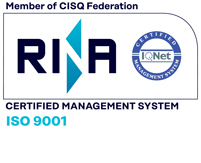Vietnam
SOLUTIONS NEEDED TO HANDLE END-OF-LIFE-CYCLE TREATMENT FOR EV BATTERIES
As the number of electric vehicles (EVs) continues to rise globally, finding sustainable solutions for managing the batteries at the end of their life cycle is crucial for environmental and resource sustainability, and Việt Nam must be part of this, said experts.By focusing on end-of-life-cycle solutions for EV batteries, they are recognising the importance of responsible disposal or recycling to minimise environmental impact and maximise resource recovery.Hà Minh Hiệp, the Acting Director General of (STAMEQ) said, it seemed that Việt Nam had been making significant progress in the development of electric vehicles (EVs) and creating a supportive policy environment for their adoption. There had been an increase in the number of motor vehicles running on electricity in Việt Nam.By the end of 2022, Việt Nam was expected to have around 2,000,000 electric motorbikes and 11,000 electric cars in operation. This indicated a growing acceptance and demand for EVs in the country. Additionally, there had been an increase in the number of electric buses and taxis in cities, which further promotes sustainable transportation options.He mentioned that Việt Nam's domestic electric vehicle industry had set ambitious plans to develop a complete ecosystem for EVs. This would include the provision of charging infrastructure and battery solutions, which are crucial for the widespread adoption of electric vehicles.Hiệp's statement highlights the potential benefits of increasing the use of hybrid vehicles, plug-in hybrid vehicles, and pure electric vehicles to reduce carbon emissions in the transportation industry. Electric vehicle batteries have a limited lifespan, and their disposal can have environmental implications. To address this issue, battery recycling plays a crucial role. By recycling batteries, valuable minerals such as cobalt, nickel and lithium can be recovered, reducing the need for continuous mining and reducing the pressure on supply chains.Dr. Nguyễn Sỹ Linh of the Ministry of Natural Resource and Environment told participants that Việt Nam was estimated to generate about 900,000 tonnes of hazardous waste. Of the figure, 20-30 per cent came from industries, while the agriculture sector generated about 9,000 tonnes and the medical sector, about 21,374 tonnes.The National Strategy on Integrated Solid Waste Management by 2025 and towards 2050, as outlined in Decision 491/QĐ-TTg dated May 7, 2018, aims to strictly manage and control hazardous solid waste throughout its life cycle, from the source of waste generation to collection, transportation and final treatment.One important aspect of the strategy is the encouragement of the construction of intensive treatment and recycling facilities for specific types of hazardous waste. This indicates a focus on developing specialised facilities that can handle hazardous waste in an environmentally sound manner.The strategy also sets specific targets for the collection, transportation and treatment of hazardous waste. By 2025, the goal is to achieve a rate of 95 per cent of hazardous waste being collected, transported and treated according to regulations. By 2030, the target is even higher, aiming for a rate of 98 per cent. These targets indicate a commitment to improving the management and disposal of hazardous waste over time.Đoàn Thị Thanh Vân, Head of the Electrical and Electronic Standards Department of the Vietnam Quality Standards Institute, released a statement saying all types of cell batteries, including lithium-ion, lithium-polymer and lead batteries, have certain environmental effects.Việt Nam has established standards for the disposal of end-of-life-cycle batteries. These standards require that batteries at the end of their life cycle be managed in a way that avoids the release of hazardous substances into the environment. Additionally, all battery products must be collected when they reach the end of their useful life. Substances such as Ni-Cd, Ni-MH, and Li-ion should be reused or recycled to create new battery products.Koji Maehara, a representative of the Japan Automobile Manufacturers Association (JAMA), said that it was important to determine and fully implement the roles and responsibilities of the Government and the recycling industry and users in order to create a society working towards recycling through proper waste treatment. (ICE HO CHI MINH CITY)
Fonte notizia: Vietnam News




